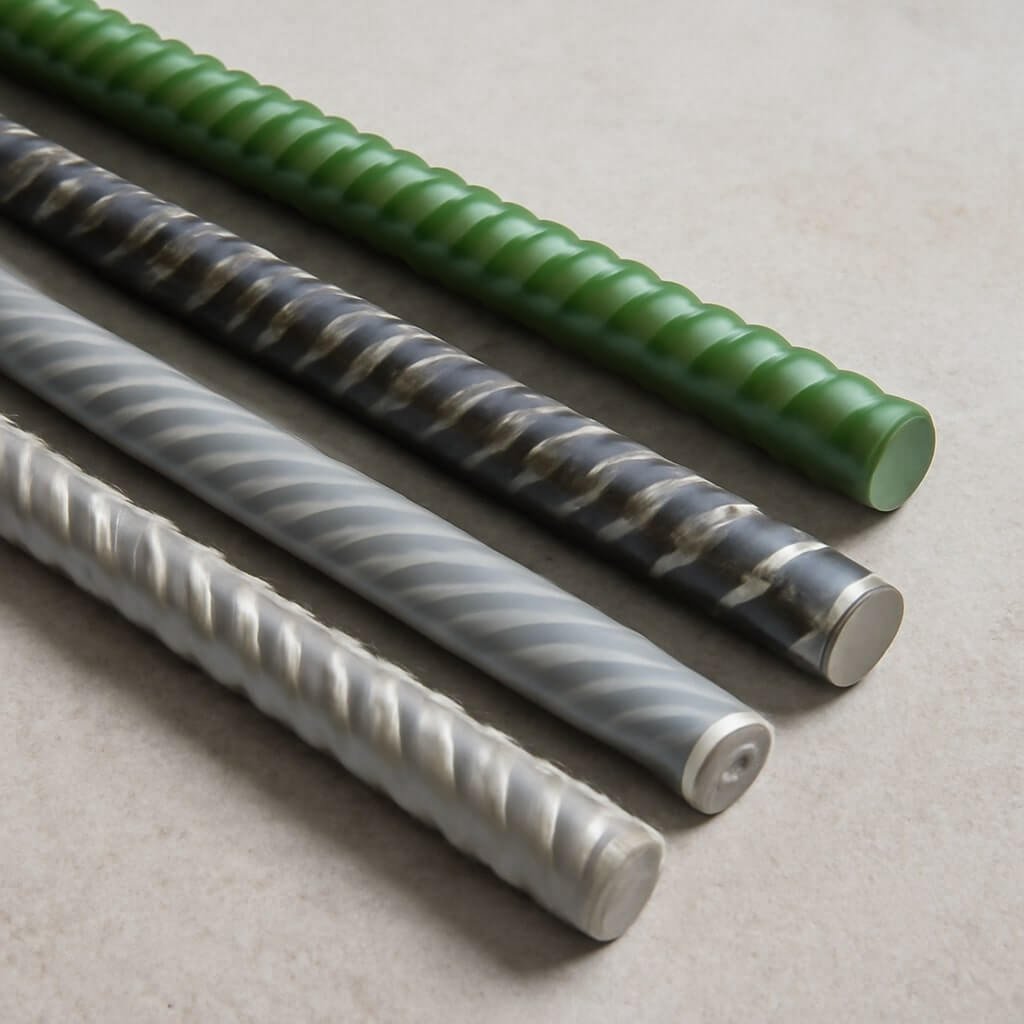Concrete is one of the most widely used construction materials worldwide, valued for its strength and versatility. However, while concrete excels in compression, it tends to be weak in tension. That’s where reinforcement comes in — specifically, rebar (short for reinforcing bar). Rebar significantly boosts concrete’s tensile strength and helps it withstand various stresses, extending the lifespan and safety of structures.
But with so many types of rebar available on the market, the question arises: which rebar types are best for concrete reinforcement? This article dives deep into the different rebar types, their characteristics, benefits, and applications, guiding you to the best choice for your concrete projects.
Understanding Rebar: What Is It and Why Is It Used?
Rebar is a steel bar or mesh of steel wires used as a tension device in reinforced concrete and masonry structures. It serves as the “skeleton” inside concrete, providing resistance to tensile and shear forces that concrete alone can’t handle efficiently. Without rebar, concrete structures are prone to cracking and failure under stress.
The use of rebar dates back over a century and has evolved with advances in metallurgy and material science, offering a variety of options tailored to specific needs and environments.
Common Materials Used in Rebar
While steel is the most common material for rebar, there are other types used for specialized applications. Here’s a closer look:
Steel Rebar: Characteristics and Benefits
Steel rebar remains the industry standard due to its excellent tensile strength, durability, and cost-effectiveness. Carbon steel rebar comes in various grades and sizes, making it highly versatile. It bonds well with concrete thanks to its textured surface, enhancing structural integrity.
Epoxy-Coated Rebar: Enhanced Corrosion Resistance
In environments where corrosion is a risk, such as marine structures or roads exposed to deicing salts, epoxy-coated rebar is a popular choice. The epoxy coating acts as a protective barrier against moisture and chlorides, significantly extending the rebar’s lifespan.
Stainless Steel Rebar: Premium Option
Stainless steel rebar offers superior corrosion resistance compared to carbon steel and epoxy-coated variants. Though more expensive, it’s ideal for highly corrosive environments like chemical plants or coastal infrastructure where longevity is paramount.
Fiber-Reinforced Polymer (FRP) Rebar
FRP rebar is made from composite materials like fiberglass or carbon fibers embedded in a polymer matrix. It’s lightweight, non-corrosive, and non-magnetic, making it perfect for specialized uses such as in MRI rooms or bridges where corrosion is a critical concern.
Different Grades and Sizes of Rebar
Rebar comes in multiple grades that indicate its tensile strength, typically designated by numbers such as Grade 40, 60, or 75 (measured in ksi, or thousands of pounds per square inch). Choosing the right grade depends on the structural load and safety requirements.
Sizes are standardized, often ranging from #3 (3/8 inch diameter) to #18 (2.25 inches diameter). The size affects the load-bearing capacity and ease of placement.
How to Choose the Right Grade for Your Project
Consider the environmental conditions, load demands, and budget. For residential projects, Grade 40 or 60 steel rebar is usually sufficient. Infrastructure projects requiring higher strength and durability may call for higher grades or specialty rebars like stainless steel or FRP.
Comparing Deformed vs. Plain Rebar
The surface texture plays a key role in how well rebar bonds with concrete:
- Deformed Rebar: Features ridges or patterns on the surface, improving grip and preventing slippage.
- Plain Rebar: Smooth surface, less common in modern construction, typically used in non-structural applications.
Deformed rebar is generally preferred for reinforced concrete as it ensures a stronger bond.
Applications and Best Use Cases for Each Rebar Type
Different projects benefit from specific rebar types:
- Steel Rebar: Most general construction, commercial buildings, residential homes.
- Epoxy-Coated Rebar: Bridges, highways, marine structures.
- Stainless Steel Rebar: Chemical plants, coastal infrastructure, high-corrosion risk areas.
- FRP Rebar: Specialty projects requiring non-metallic reinforcement, such as electrical facilities or lightweight structures.
Installation Best Practices
Proper installation is crucial for rebar performance. This includes correct placement within the concrete, maintaining adequate cover (distance from the surface), securing rebar to prevent displacement during concrete pouring, and following design specifications meticulously.
Common Challenges and Solutions with Rebar in Concrete
Rebar can face challenges like corrosion, bending damage, and improper placement. Using coated or stainless steel rebar can prevent corrosion. Careful handling during installation avoids bending and weakening the bars.
Cost Analysis: Which Rebar Offers the Best Value?
Carbon steel rebar is the most economical but may incur higher maintenance costs in corrosive environments. Epoxy-coated rebar offers a mid-range price with better corrosion resistance, while stainless steel and FRP are premium options justified by durability and specialized use.
Environmental Impact and Sustainability of Rebar Types
Steel rebar is highly recyclable, reducing environmental impact. FRP rebar is less recyclable but reduces corrosion and maintenance needs, contributing to sustainability over time. Choosing the right material also helps lower the carbon footprint of construction projects.
FAQs About Rebar Types for Concrete Reinforcement
What is the strongest type of rebar for concrete?
Stainless steel rebar is generally the strongest and most corrosion-resistant, but Grade 75 carbon steel can also offer high tensile strength.
Can rebar rust inside concrete?
Yes, if moisture and chlorides penetrate the concrete, carbon steel rebar can rust, causing structural issues. Epoxy-coated or stainless steel rebar helps prevent this.
Is FRP rebar more expensive than steel?
Initially, yes, but its corrosion resistance and longevity can lower life-cycle costs, making it cost-effective in certain applications.
What is the difference between Grade 40 and Grade 60 rebar?
Grade 40 has a tensile strength of 40 ksi, while Grade 60 has 60 ksi, meaning Grade 60 can handle higher stresses.
How thick should the concrete cover be over rebar?
It varies by project and exposure conditions, but typically ranges from 1.5 to 3 inches to protect rebar from corrosion.
Can rebar be reused from demolished concrete?
Yes, steel rebar is recyclable, but reused rebar must be inspected for damage and corrosion before reuse.
Conclusion: Choosing the Best Rebar for Your Concrete Project
Selecting the right rebar type depends on factors like project requirements, environmental conditions, and budget. Steel rebar suits most applications, epoxy-coated rebar offers corrosion resistance at moderate costs, stainless steel is best for extreme environments, and FRP serves specialized needs.
Understanding these options ensures you reinforce your concrete effectively, maximizing safety, durability, and value.




